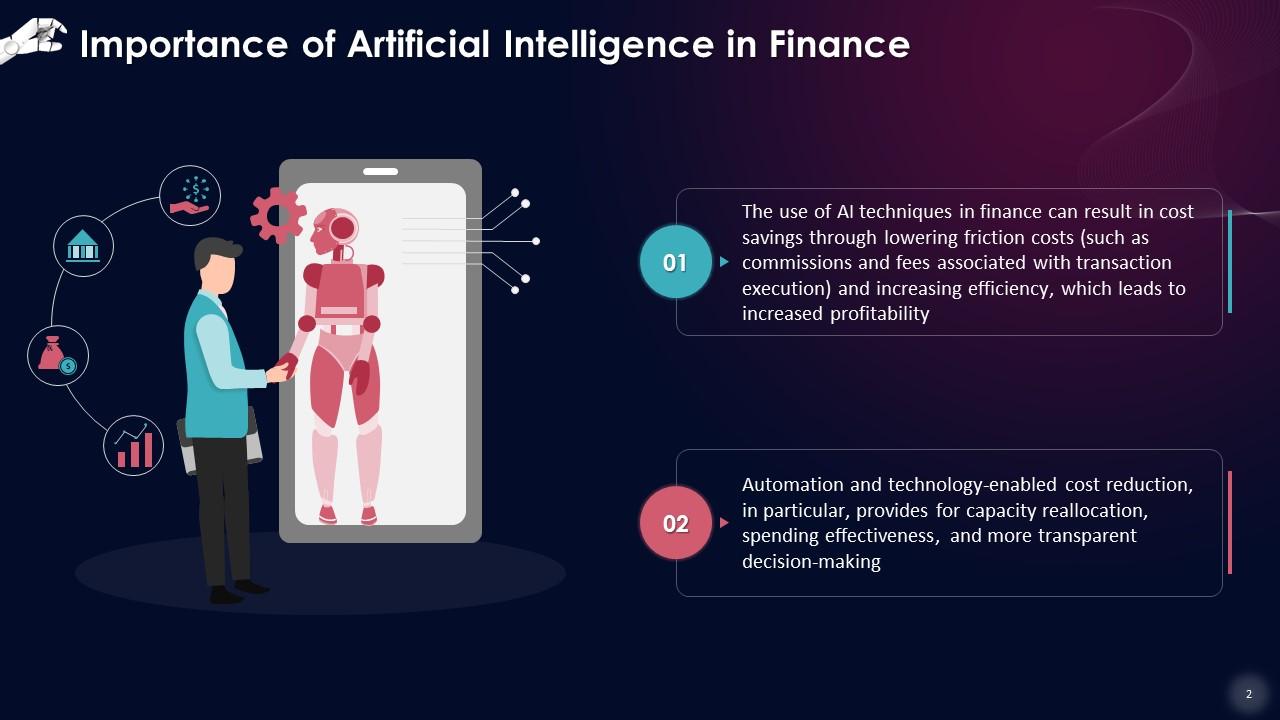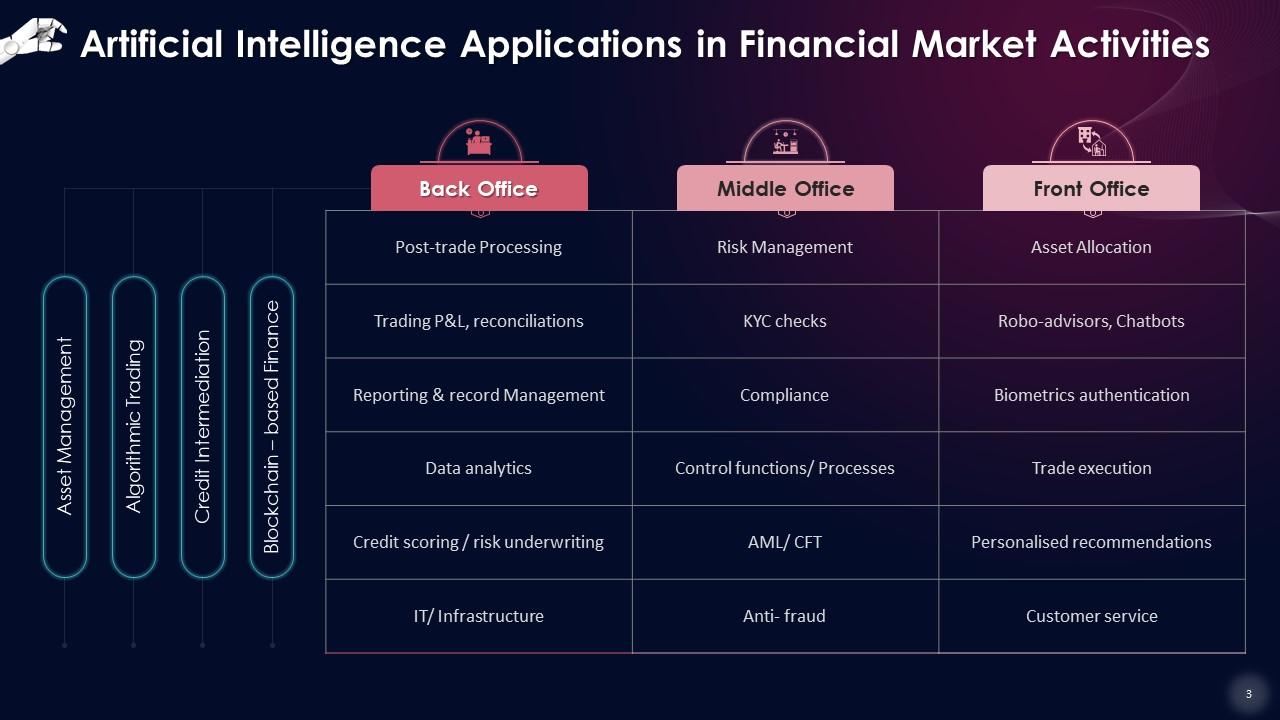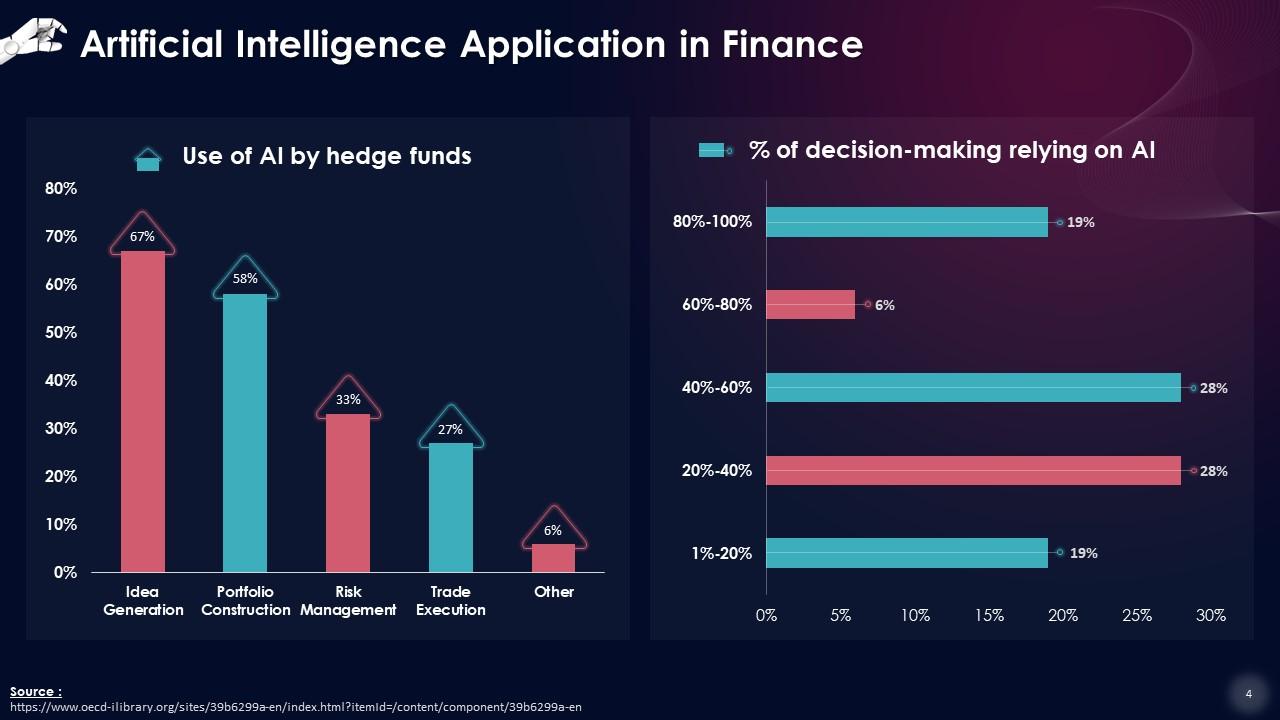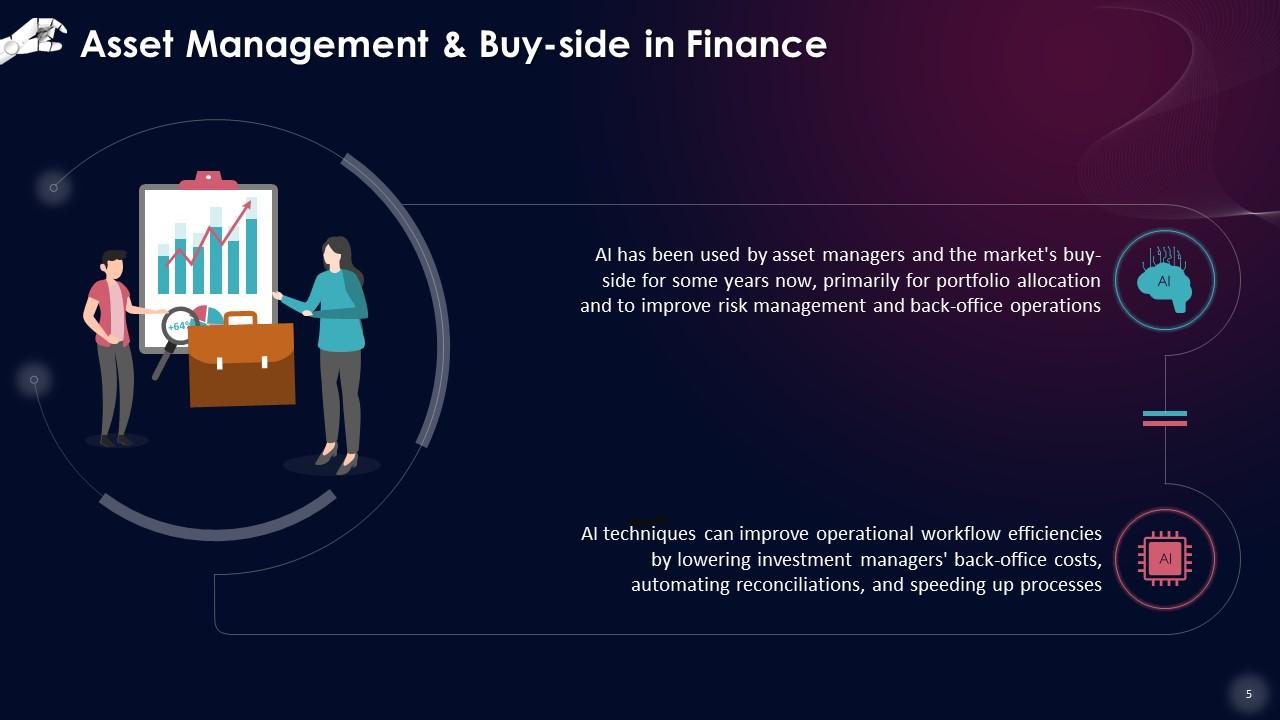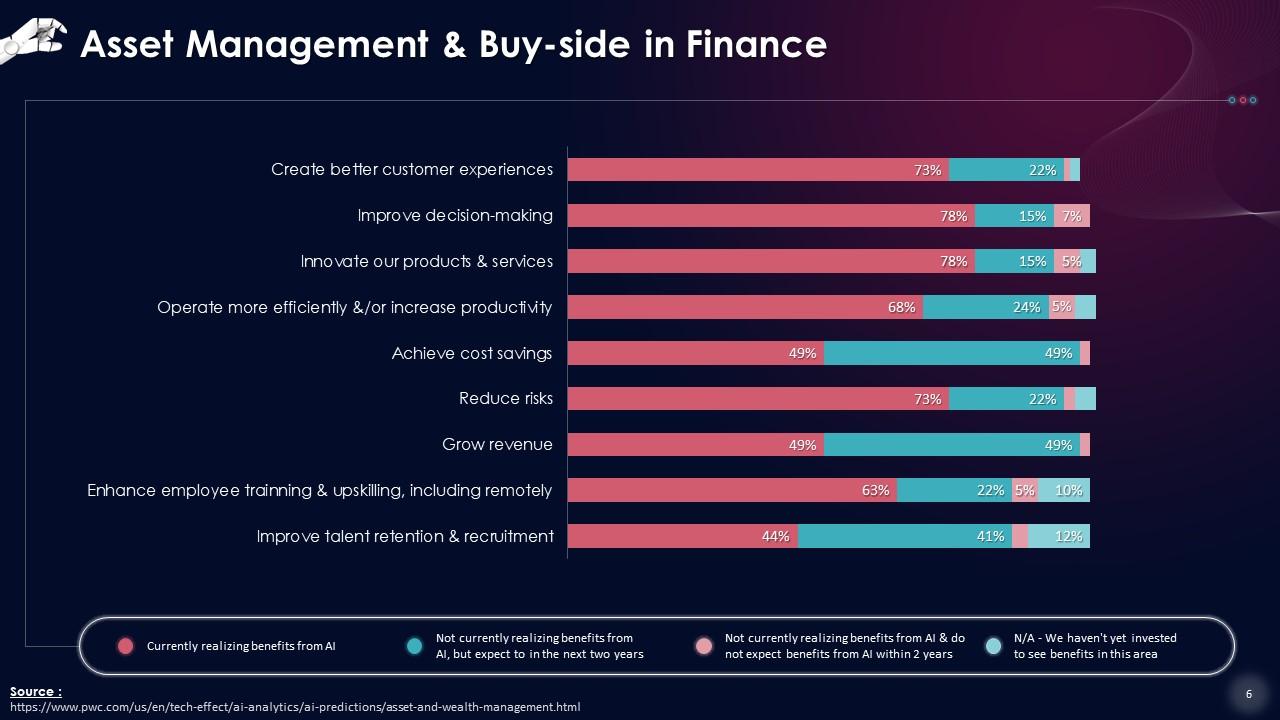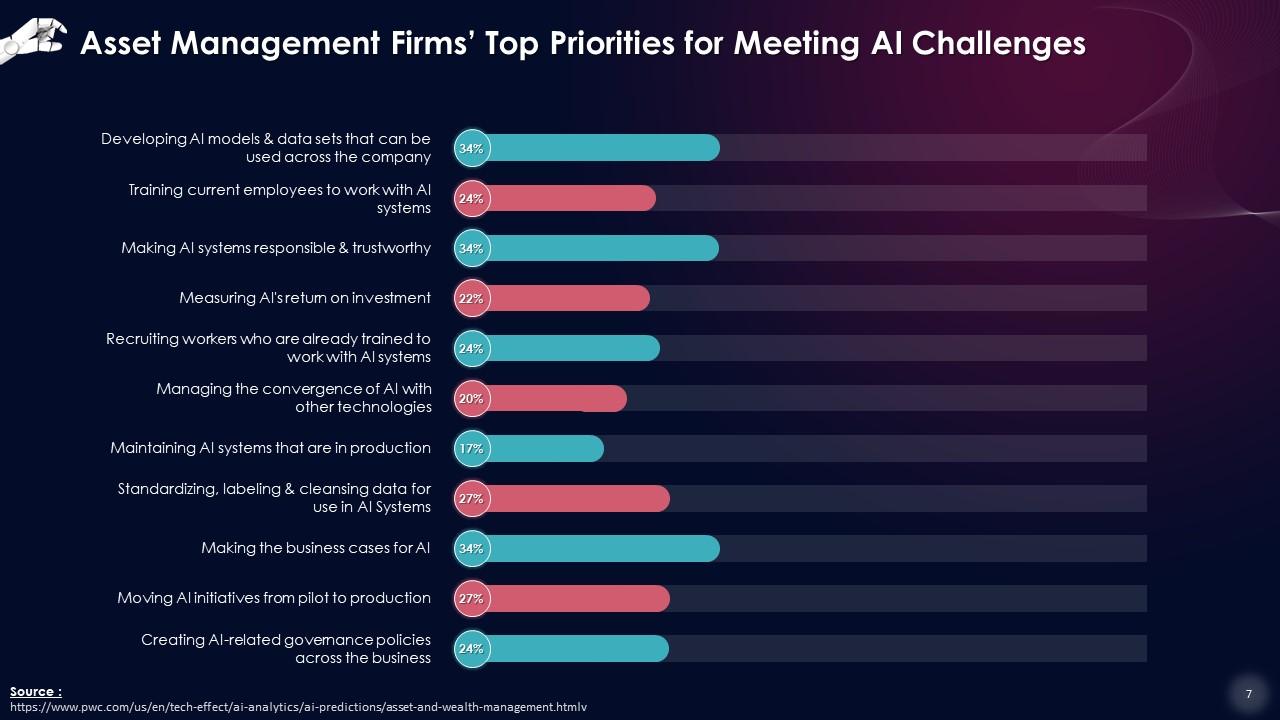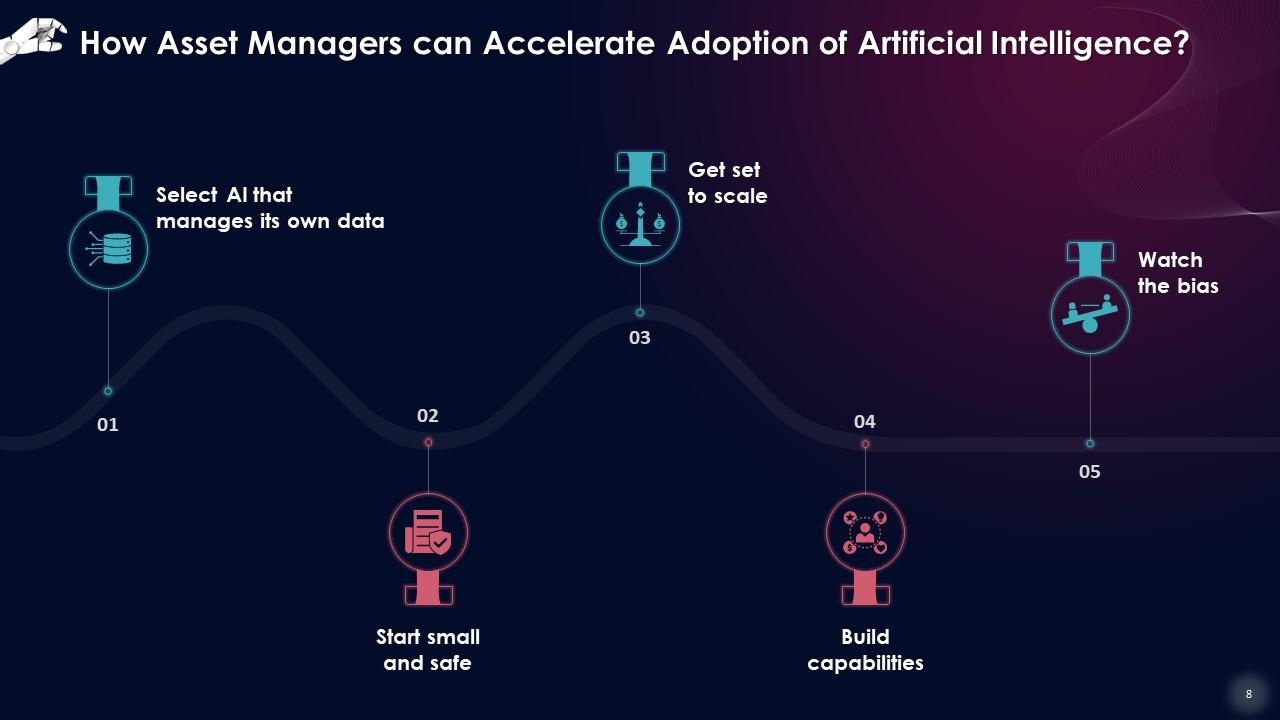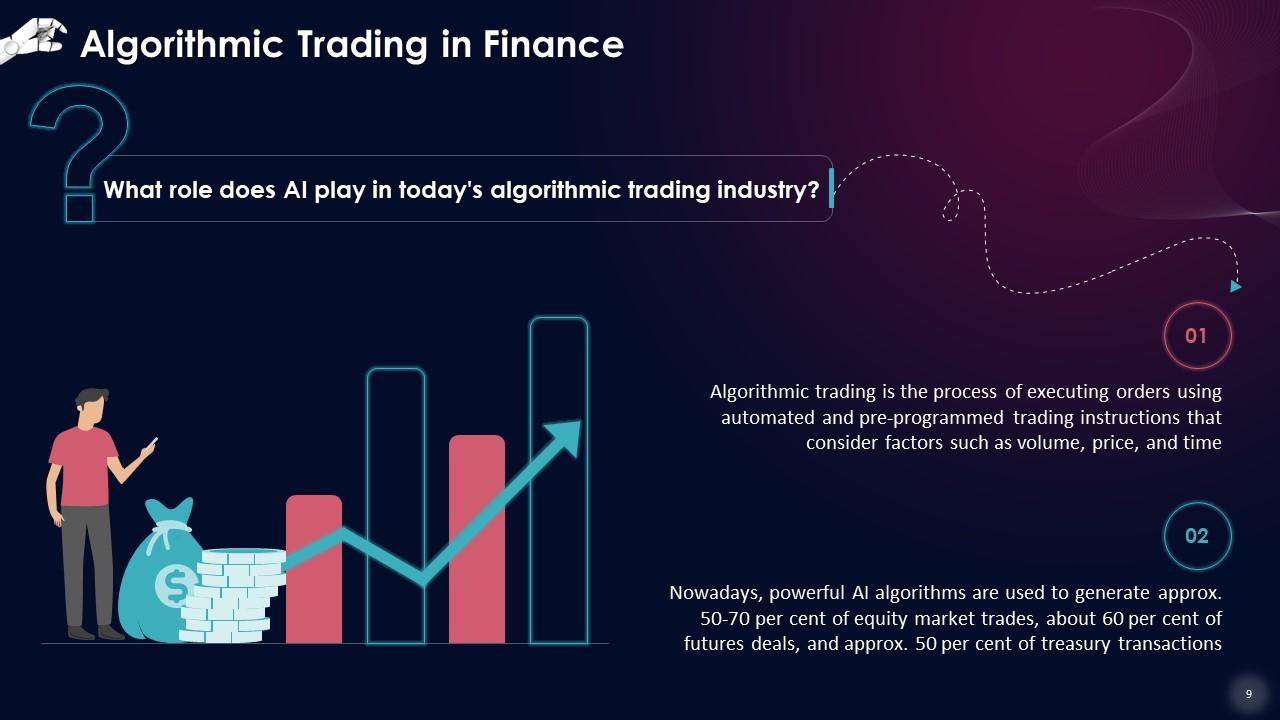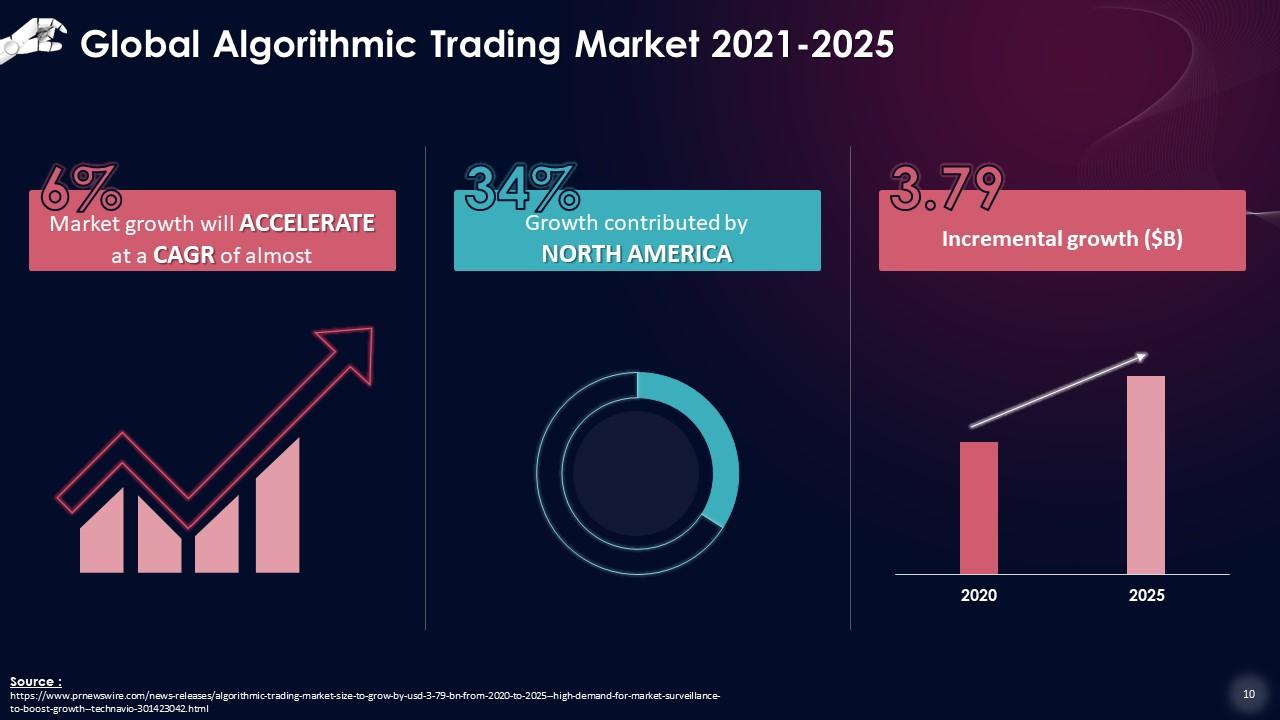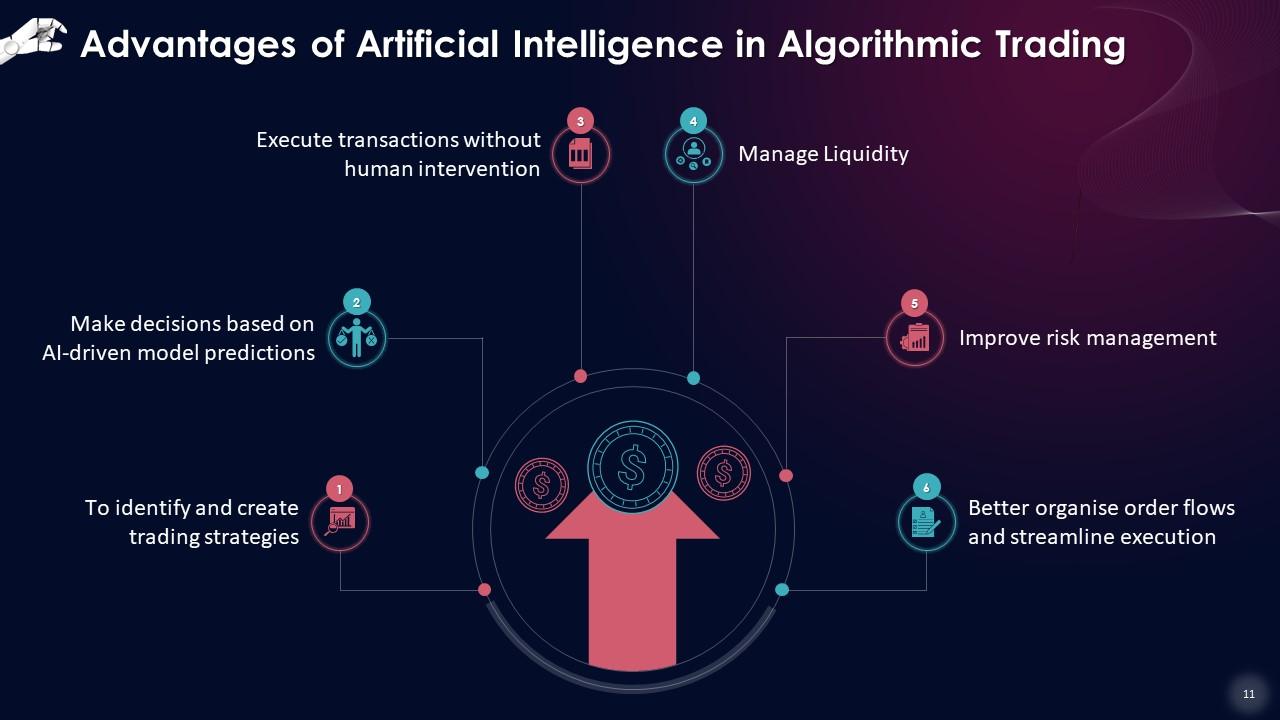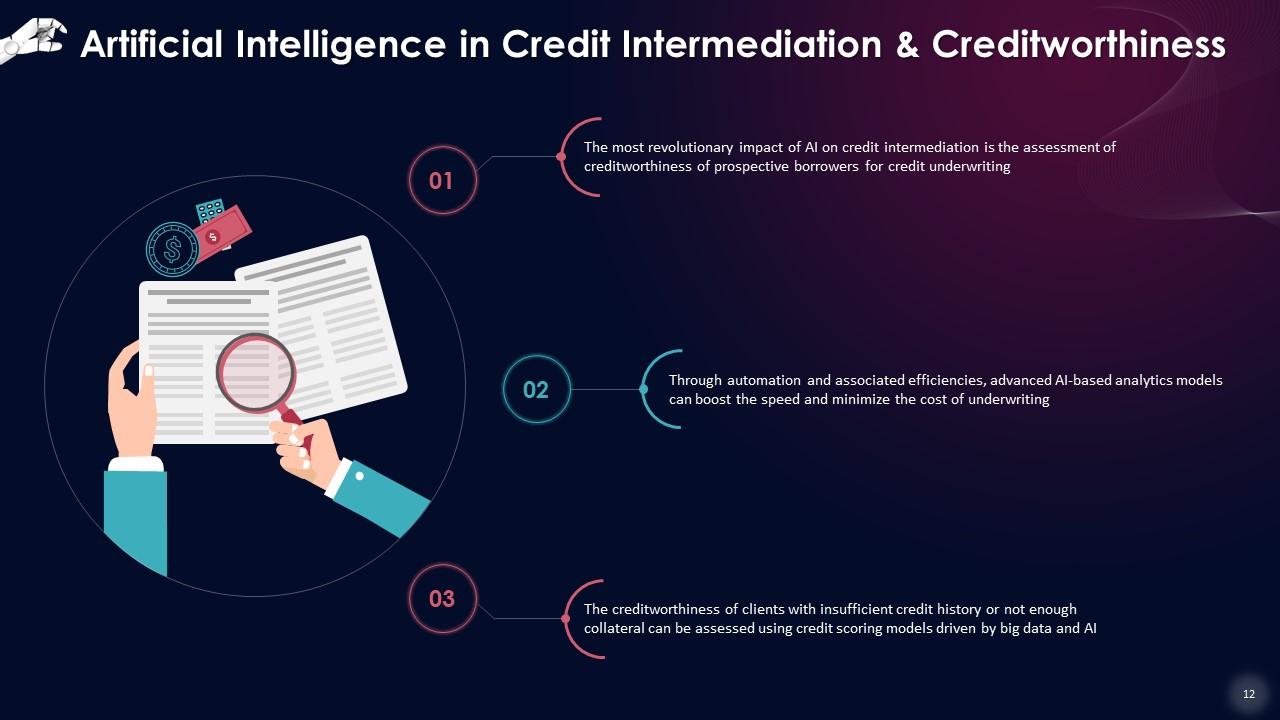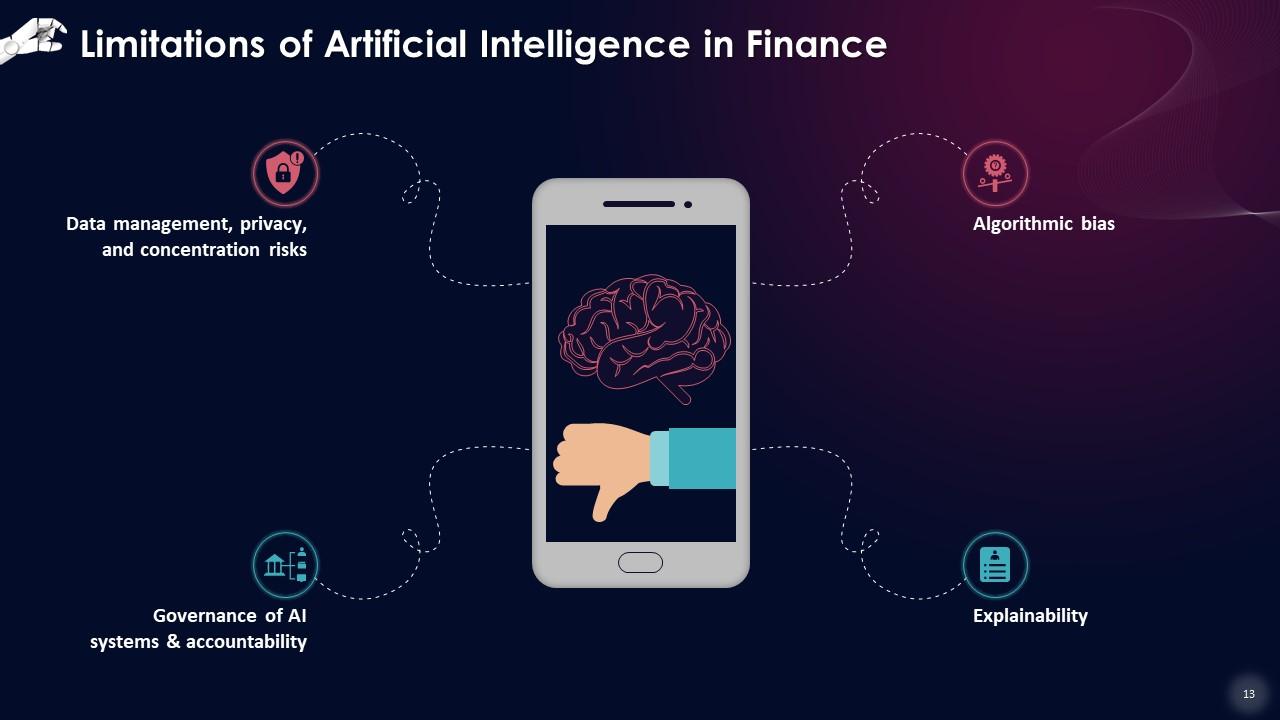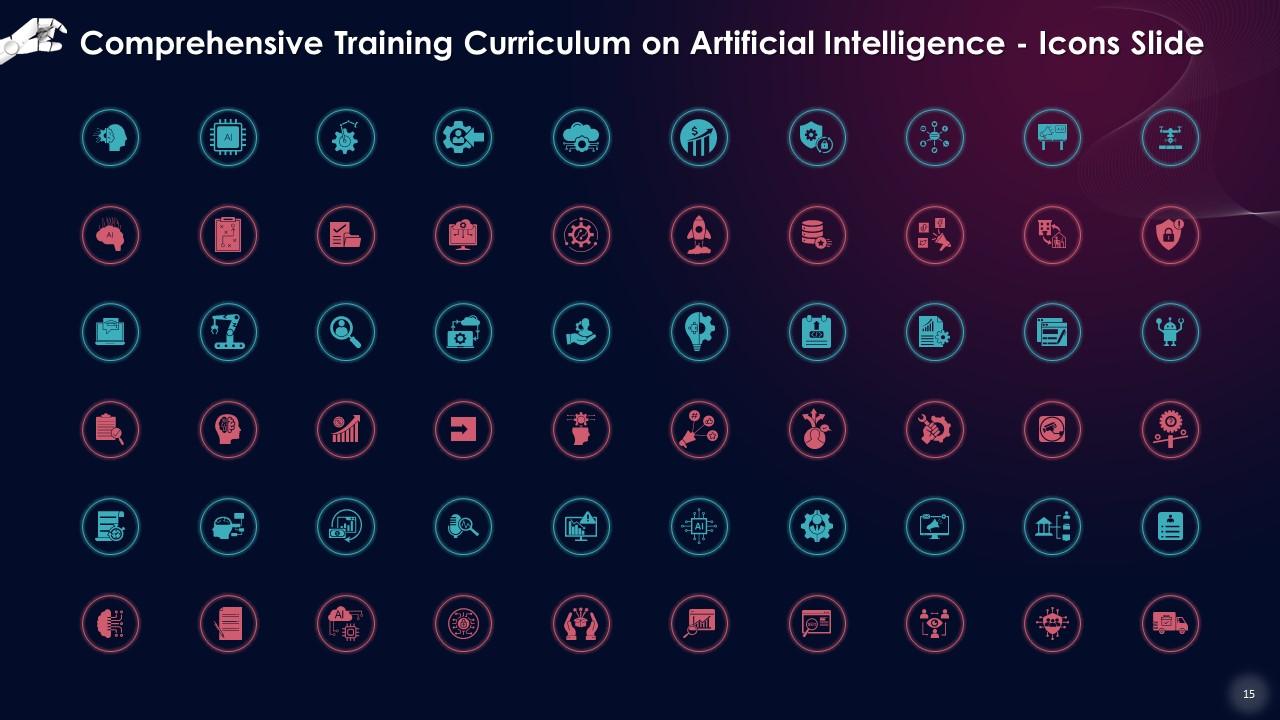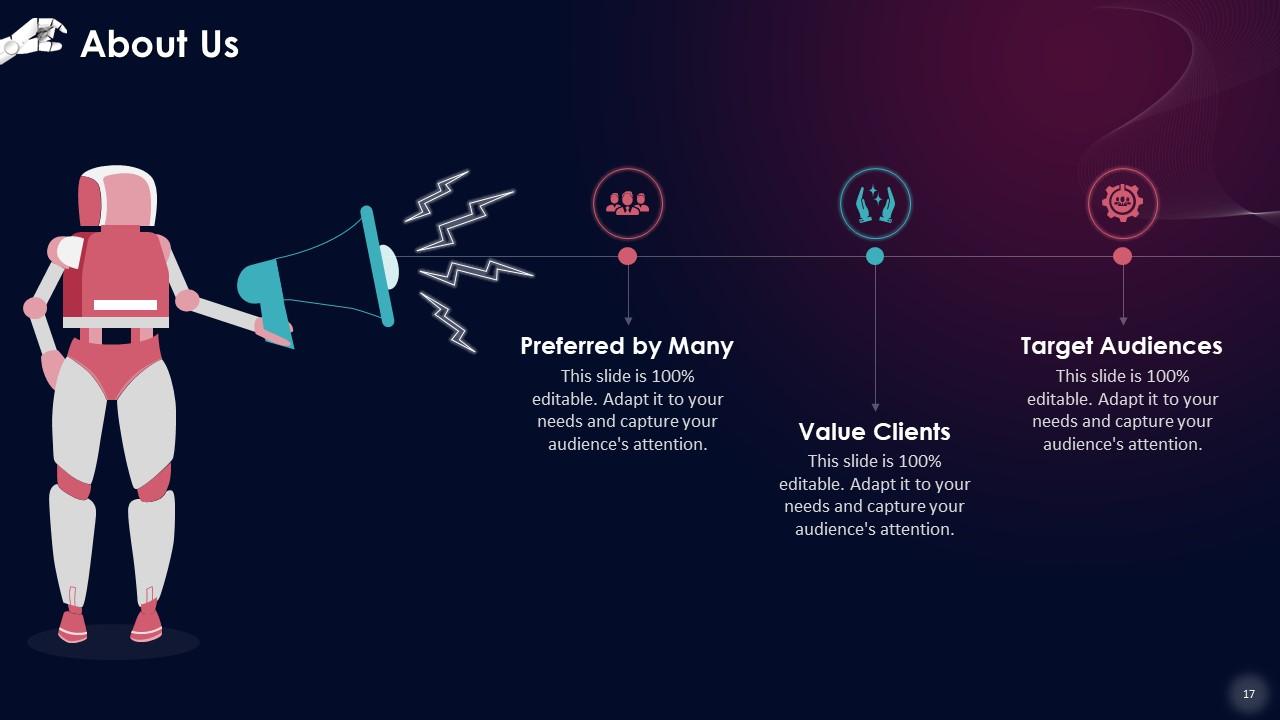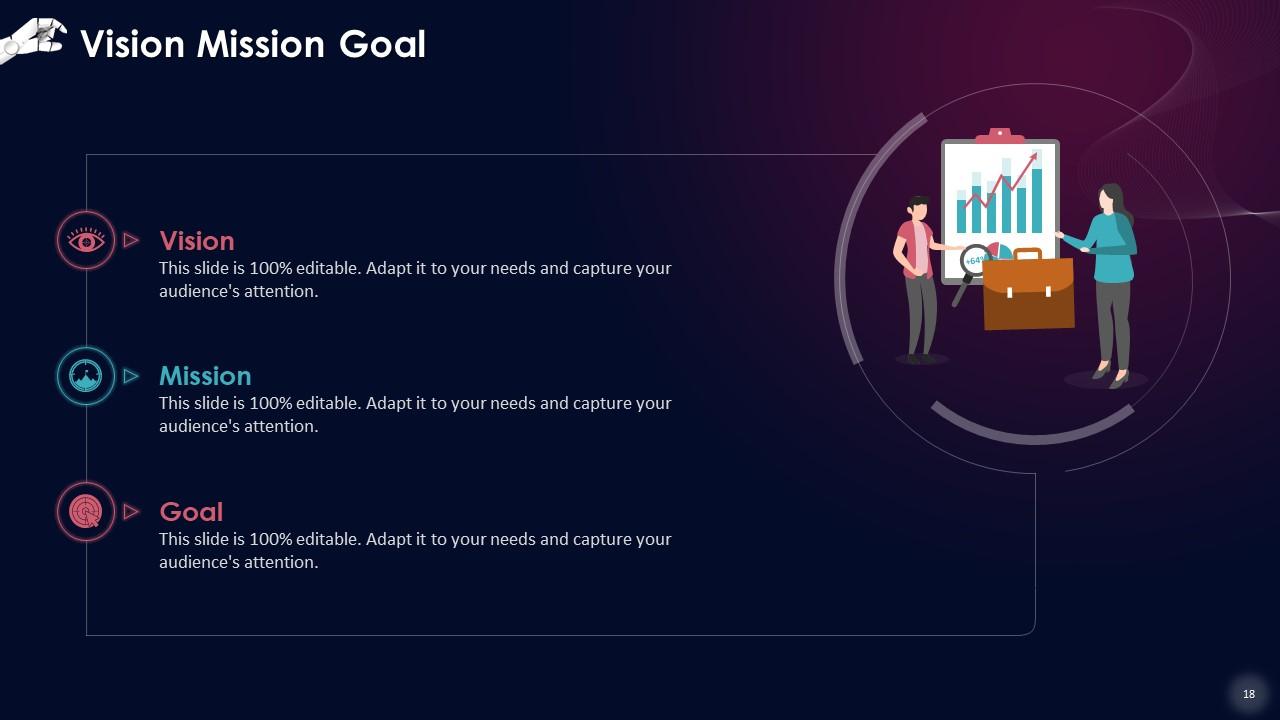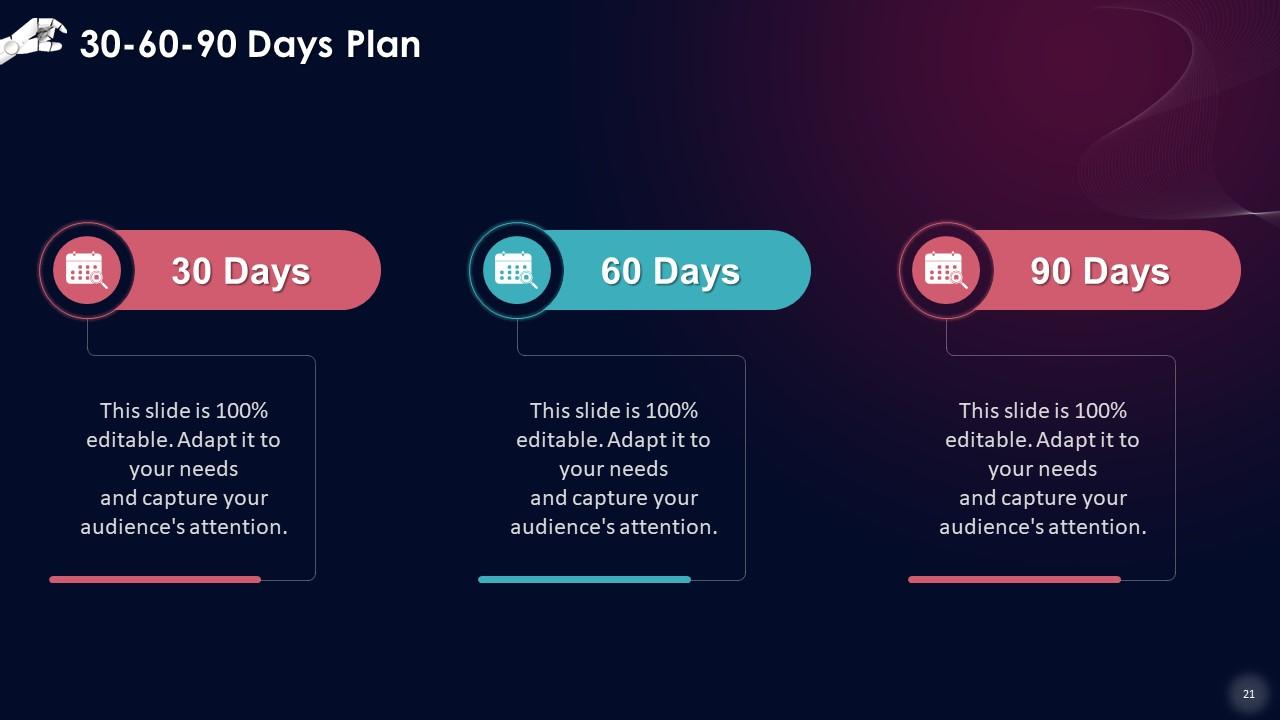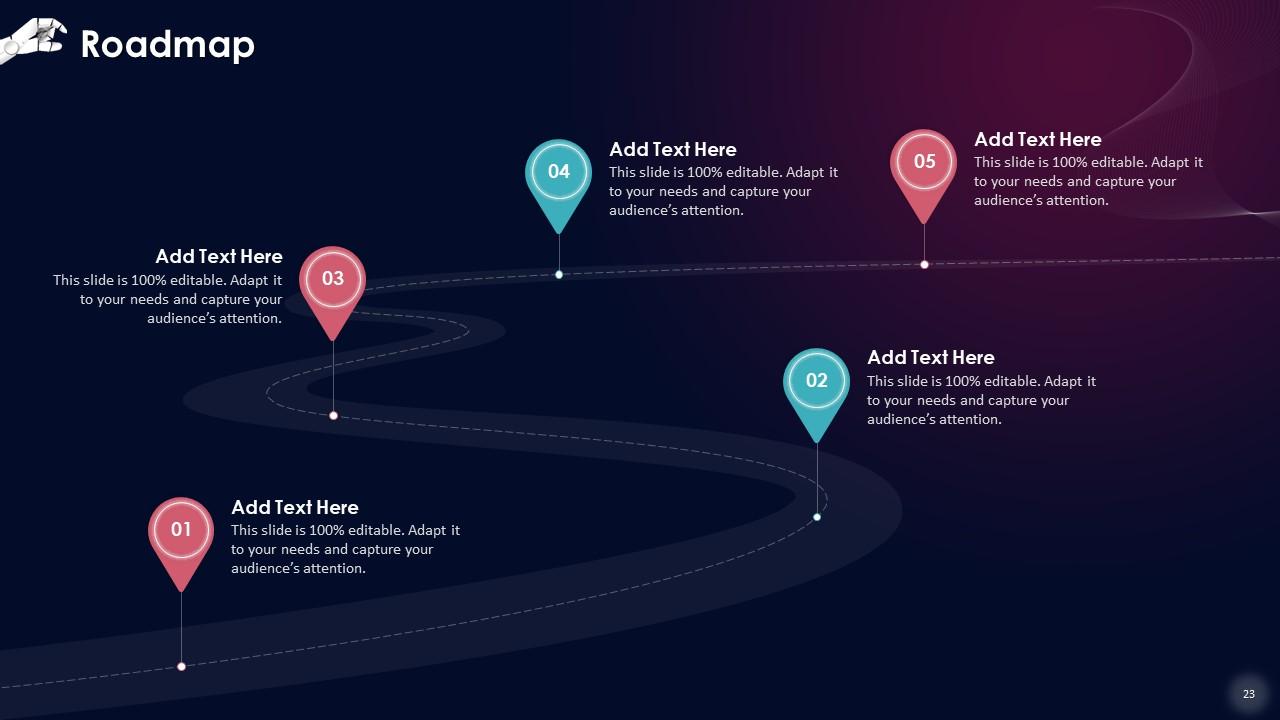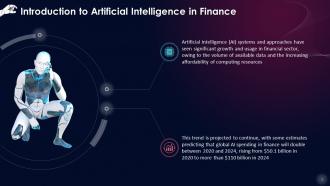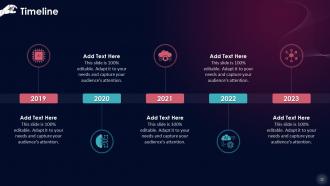Role Of Artificial Intelligence In Finance Training Ppt
These slides provide information on Artificial Intelligence in the finance sector. Using AI techniques in finance can result in cost savings through lowering friction costs and increasing efficiency, which leads to increased profitability. Through automation and associated efficiencies, advanced AI-based analytics models can boost the speed and minimize the cost of underwriting.
These slides provide information on Artificial Intelligence in the finance sector. Using AI techniques in finance can resul..
- Google Slides is a new FREE Presentation software from Google.
- All our content is 100% compatible with Google Slides.
- Just download our designs, and upload them to Google Slides and they will work automatically.
- Amaze your audience with SlideTeam and Google Slides.
-
Want Changes to This PPT Slide? Check out our Presentation Design Services
- WideScreen Aspect ratio is becoming a very popular format. When you download this product, the downloaded ZIP will contain this product in both standard and widescreen format.
-

- Some older products that we have may only be in standard format, but they can easily be converted to widescreen.
- To do this, please open the SlideTeam product in Powerpoint, and go to
- Design ( On the top bar) -> Page Setup -> and select "On-screen Show (16:9)” in the drop down for "Slides Sized for".
- The slide or theme will change to widescreen, and all graphics will adjust automatically. You can similarly convert our content to any other desired screen aspect ratio.
Compatible With Google Slides

Get This In WideScreen
You must be logged in to download this presentation.
PowerPoint presentation slides
Presenting Role of Artificial Intelligence in Finance. Each slide is well crafted and designed by our PowerPoint experts. This PPT presentation is thoroughly researched by the experts, and every slide consists of appropriate content. All slides are customizable. You can add or delete the content as per your need. Not just this, you can also make the required changes in the charts and graphs. Download this professionally designed business presentation, add your content and present it with confidence.
People who downloaded this PowerPoint presentation also viewed the following :
Content of this Powerpoint Presentation
Slide 1
This slide introduces Artificial Intelligence in the Finance Sector. Artificial Intelligence (AI) systems and approaches have seen significant growth and usage in financial sector, owing to the volume of available data and the increasing affordability of computing resources
Slide 2
This slide discusses the importance of the application of AI in Finance. The use of AI techniques in finance can result in cost savings through lowering friction costs and increasing efficiency, which leads to increased profitability. Automation and technology-enabled cost reduction, in particular, provides for capacity reallocation, spending effectiveness, and more transparent decision-making.
Instructor’s Notes: AI applications for financial services can improve the quality of services and products offered to financial customers, increase product customization and personalization, and diversify the product offering. AI processes can extract insights from data to form investment plans and improve financial inclusion by allowing the creditworthiness of clients with short credit histories to be assessed.
Slide 3
This slide showcases financial activities in which AI can be applied. AI and big data can influence business models in the financial sector. It also influences activities such as asset management and investment, trading, lending, etc.
Instructor’s Notes: AML/CFT : Anti-Money Laundering/ Combating of Financing of Terrorism (Refer to the middle office category)
Slide 4
This slide depicts the usage of Artificial Intelligence in Hedge Funds which include idea generation, portfolio construction, risk management, and trade execution. It also shows the percentage of decision-making that relies on Artificial Intelligence.
Slide 5
This slide illustrates the use of AI in Asset Management within the finance sector. Asset managers and the market's
buy-side have used AI for some years, primarily for portfolio allocation and to improve risk management and back-office operations.
Instructor’s Notes: AI techniques can improve operational workflow efficiencies by lowering investment managers' back-office costs, automating reconciliations, and speeding up processes. It results in lowering direct and indirect transaction costs and improving performance by reducing irrelevant features and information in decision-making.
Slide 6
This slide showcases the impact of Artificial Intelligence on Asset Management & Buy-side and how it enhances investor experience. The benefits of AI include better customer experience, improved decision-making, better products & services, efficiency, increased productivity, cost savings, reduced risks, growth in revenue, enhanced employee training & upskilling, and improved talent retention & recruitment.
Slide 7
This slide depicts asset management firms’ top priorities for meeting AI challenges such as lack of AI knowledge amongst employees, lack of trust in AI systems, its return on investment, etc.
Slide 8
This slide lists how to accelerate the benefits of Artificial Intelligence in Finance. The guidelines are to select an AI system that manages its data, start small & safe, gradually scale up, build capabilities, and be vigilant about its biases.
Instructor’s Notes:
- Select AI that manages its own data: AI is powered by the latest, comprehensive, standardized, validated, and easily accessible data. With capabilities to ingest, reconcile, validate, and standardize data from many sources in real-time, proper AI solutions will help construct their own foundation
- Start small & scale: Many AI solutions might start with small steps and quick returns. Governance, security, compliance, and ethics are incorporated into the best solutions. You can see immediate wins while strictly controlling your risks using the correct AI technology
- Get set to scale: Choose solutions that may begin in one area, but once demonstrated, can be applied across varied situations. Spending time and resources to develop a solution is frequently only the first step; scaling it can dramatically boost your return on investment. Many AI solutions will overlap and improve one another if they are correctly built
- Build out capabilities: Some AI installations may be plug-and-play at first, but your personnel will need to be upskilled as your solutions improve. You'll also need to create a culture and structure that can take advantage of more automation and move rapidly on data-driven insights in real-time
- Watch the bias: AI that takes decisions that are habitually unfair to specific groups of people, and this can impact a company's brand reputation, recruitment, and investment decisions, among other things. Make sure to think about ideas that can help AI algorithms eliminate prejudices
Slide 9
This slide showcases the role of Artificial Intelligence in algorithmic trading. Nowadays, powerful AI algorithms are used to generate approx. 50-70 per cent of equity market trades, about 60 per cent of futures deals, and approx. 50 per cent of treasury transactions.
Slide 10
This slide highlights the global algorithmic trading market from 2021 to 2025. From 2021 to 2025, the algorithmic trading market is predicted to increase by $3.79 billion, with a CAGR of almost 6 per cent.
Slide 11
This slide lists advantages of Artificial Intelligence in algorithmic trading. These include identifying and creating trading strategies, making decisions based on AI-driven model predictions, executing transactions without human intervention, managing liquidity, improving risk management, and organizing order flows and streamlining execution.
Instructor’s Notes: The application of AI techniques such as evolutionary computation, deep learning, and probabilistic logic to identify trading strategies and their automated implementation without human intervention has the most disruptive potential in trading. AI-powered algorithms add a layer of development and complexity, maturing into fully automated, computer-programmed algorithms that learn from the data input used and rely little on human interaction.
Slide 12
This slide talks about the impact of Artificial Intelligence on credit intermediation. Through automation and associated efficiencies, advanced AI-based analytics models can boost the speed and minimize the cost of underwriting. This is revolutionizing creditworthiness of prospective buyers.
Instructor’s Notes: The creditworthiness of clients with insufficient credit history or not enough collateral can be assessed using credit scoring models driven by big data and AI. This is accomplished by combining traditional credit data with big data that isn't intuitively related to creditworthiness.
Slide 13
This slide lists challenges or risks in the deployment of Artificial Intelligence in Finance. These include data management, privacy, & concentration risks, algorithmic bias, governance of AI systems, and explainability.
Instructor’s Notes:
- Data Management, privacy, and concentration risks: Although data is the foundation of any AI application, improper use of data in AI-powered applications or insufficient data is a significant source of risk to businesses that use AI. The reliability of the data used, obstacles relating to data privacy and confidentiality; fairness considerations; and potential concentration and significant competition issues are all examples of such risk
- Algorithmic bias: The decisions taken by AI can have a substantial impact on financial institutions’ clients. A single loan application that is denied can drastically alter a person's life. As a result, additional caution is advised to eliminate any sources of bias in the data
- Governance of AI systems and accountability: Solid governance and accountability systems are critical, mainly as AI models are increasingly used in high-value decision-making applications (e.g., credit allocation). Organizations and individuals responsible for designing, implementing, and operating AI systems should be held accountable for their proper operation
- Explainability: Explainability, or the difficulty of dissecting an ML model's output into the underlying reasons of its choice, is the most urgent obstacle in AI-based financial models. In addition to the complexity of AI-based models, market players may want to hide the mechanics of their AI models to preserve their intellectual property, obscuring the methodologies even more. The difficulty is amplified by most end-user consumers' lack of technical literacy and a mismatch between the complexity of AI models and the demands of human-scale reasoning
Role Of Artificial Intelligence In Finance Training Ppt with all 29 slides:
Use our Role Of Artificial Intelligence In Finance Training Ppt to effectively help you save your valuable time. They are readymade to fit into any presentation structure.
-
It’s really cool, and you can find pretty much everything you could need for your work or school.
-
Appreciate the research and its presentable format.



